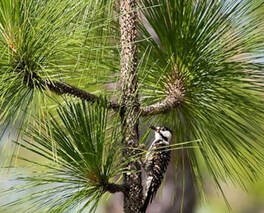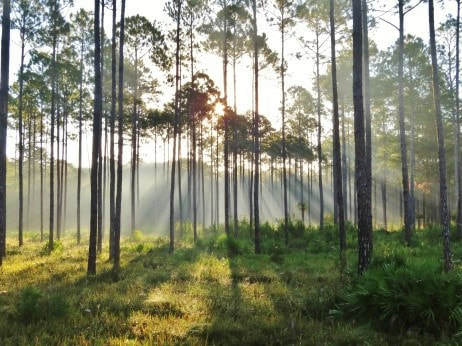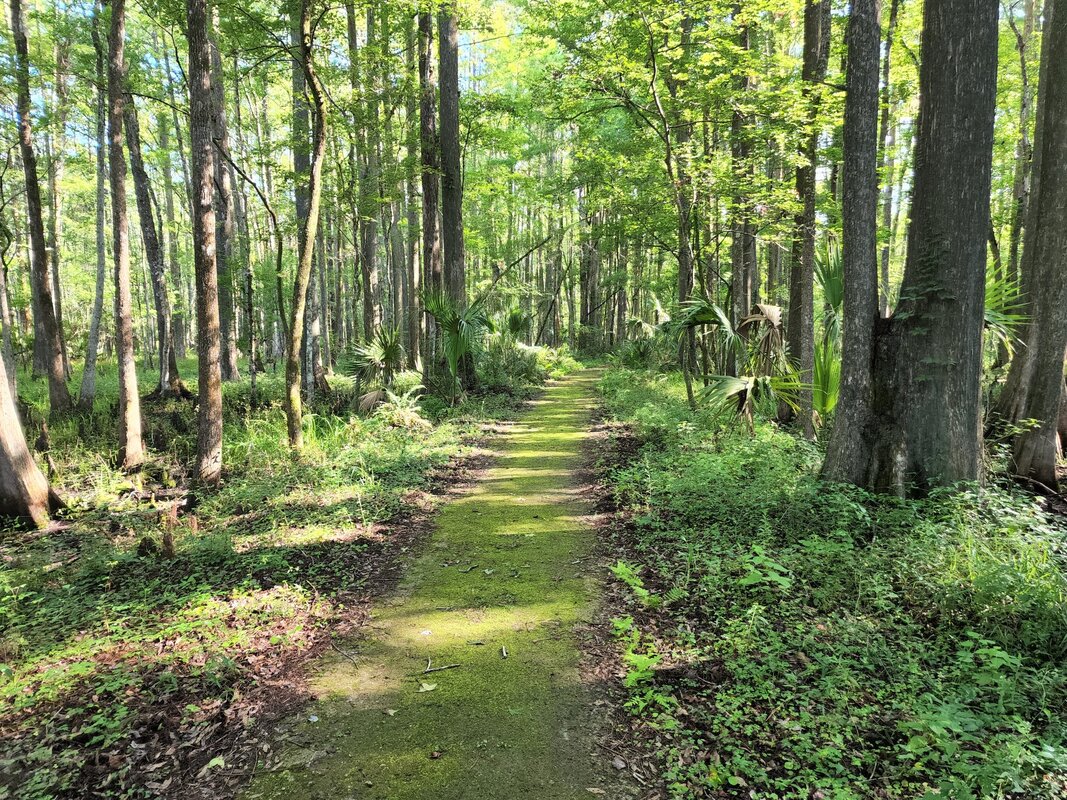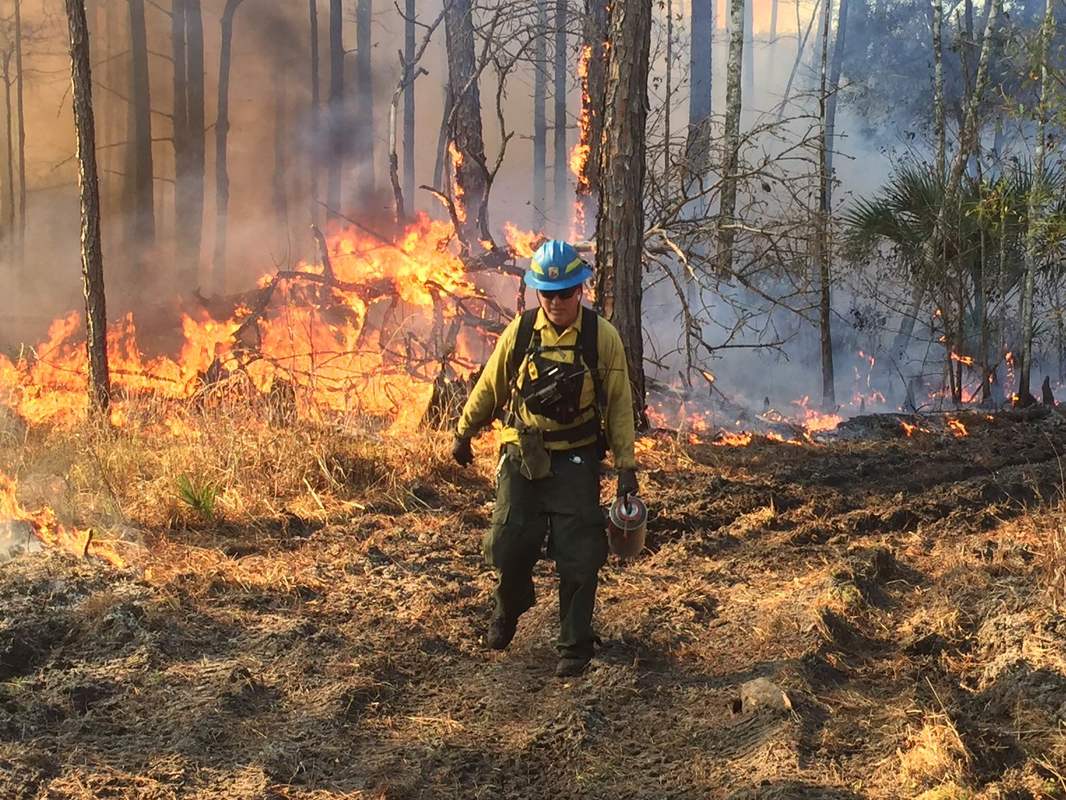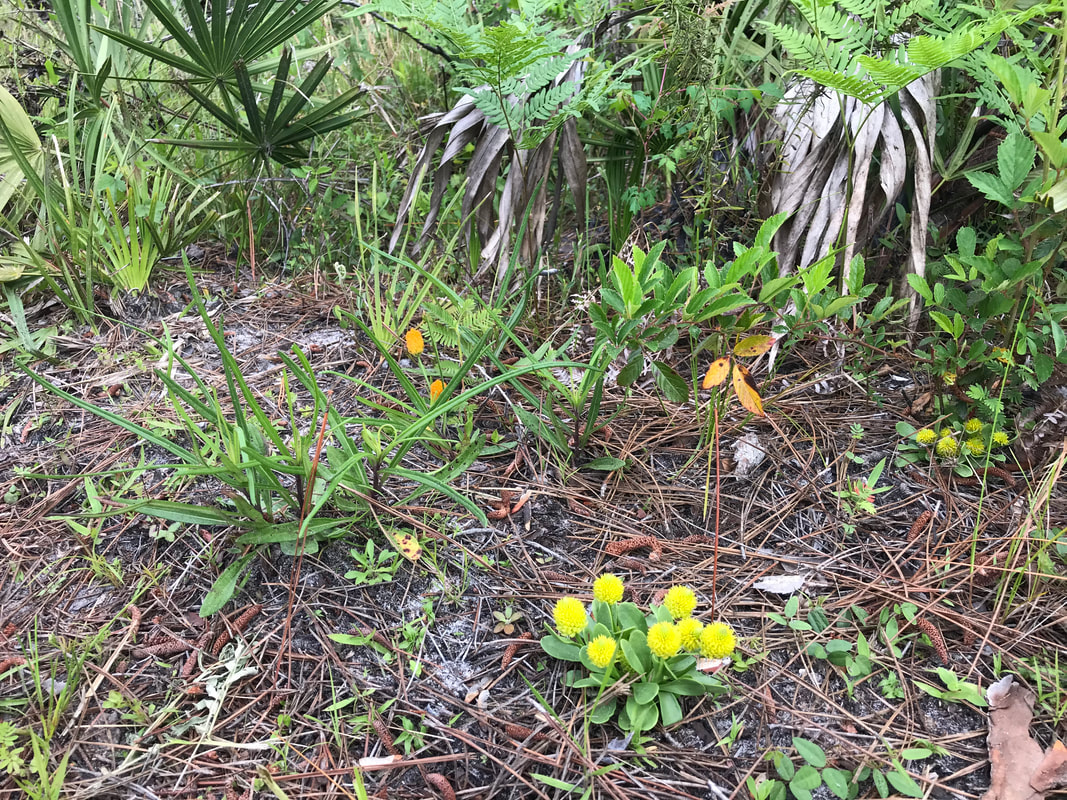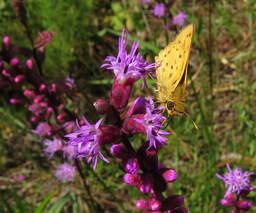|
The Refuge has begun two habitat restoration projects that will also serve as prescribed fire safety and wildfire risk reduction efforts. The first project is a longleaf pine habitat restoration project covering 23 sites in Dixie County east of County Road 349. This restoration project is a site conversion from slash pine to longleaf pine. The longleaf pine once encompassed much of the Refuge before deforestation from logging and the eventual replacement with commercial forest trees such as loblolly and slash pine. The second project is to reduce roadside hazard fuel loads on 70 miles of LSNWR roads. Refuge roads serve as fire breaks for burn units, buffers for Wildland Urban Interfaces, and access for fire equipment while conducting controlled burns and wildfire suppression. The Assistant Forester from the regional office made a recent visit to the Refuge. He has visited a few times in the last 10 years, and commented that restoration efforts over the last 5-7 years are very noteworthy. He suggested the Refuge contract with someone to do vegetation diversity surveys as well as pollinator surveys to highlight the Refuge's restoration strategies.. He was encouraged by the extent and quality of the pollinator habitat and thought that monitoring would help demonstrate the success of the ongoing efforts. While forest health has been the primary goal of restoration efforts, the successes of rejunvenating pollinator habitat has been important to the overall ecological health of the Refuge and a joy to butterfly, bird, insect and wildlife enthusiasts.
0 Comments
Leave a Reply. |
Archives
June 2024
|

Friends of the Lower Suwannee & Cedar Keys National Wildlife Refuges
P. O. Box 532 Cedar Key, FL 32625 [email protected] We are a 501(c)(3) nonprofit organization. |
|
